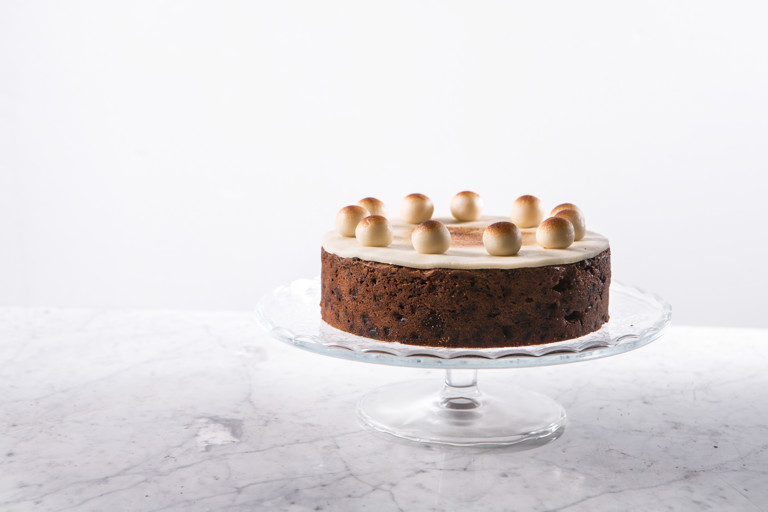Simnel cake
Simnel cake is a delicious fruit cake traditionally eaten at Easter time in Britain. Sally toasts the marzipan with a blowtorch just before serving to give the cake a golden finish. If you don’t have access to a blowtorch, you could place the cake under a grill for a similar effect.
Simnel cake is firmly rooted in British culinary history; it can be traced all the way back to Medieval times and although it is most commonly associated with Easter, it has also been linked to Mothering Sunday, when Victorian children would bring the cake as a gift. A Simnel cake is essentially a fruit cake – lighter in colour than the very dark Christmas cake, but still packed to the rafters with assorted dried fruits. The cake is baked with a layer of marzipan in the middle, which adds an extra gooey moistness when cooked. Traditionally the cake is decorated with eleven balls of marzipan to represent the twelve disciples (minus Judas), and then grilled to give the golden marzipan a burnished effect. Whether following in these age-old rituals, or just looking for an alternative to chocolate over Easter, this deliciously fruity cake is perfect served with a cup of afternoon tea.
Ingredients
Metric
Imperial
Simnel cake
- 200g of sugar
- 200g of butter
- 3 eggs
- 225g of flour
- 1 tsp mixed spice
- 50g of flaked almonds, toasted
- 225g of sultanas
- 225g of currants
- 100g of glacé cherries
- 50g of candied peel
- 1 orange's zest
- 1 lemon zest
- 1 tbsp of apricot jam
- 500g of marzipan
- icing sugar, for dusting
Method
Get in touch
Please sign in or register to send a comment to Great British Chefs.



